Abstract
Time-series analysis procedures for analyzing behavior data are receiving increasing support. However, several authorities strongly recommend using at least 50-100 points per experimental phase. A complex mathematical model must then be empirically developed using computer programs to extract serial dependency from the data before the effects of treatment interventions can be evaluated. The present discussion provides a simple method of evaluating intervention effects that can be used with as few as 8 points per experimental phase. The calculations are easy enough to do by hand.
Full text
PDF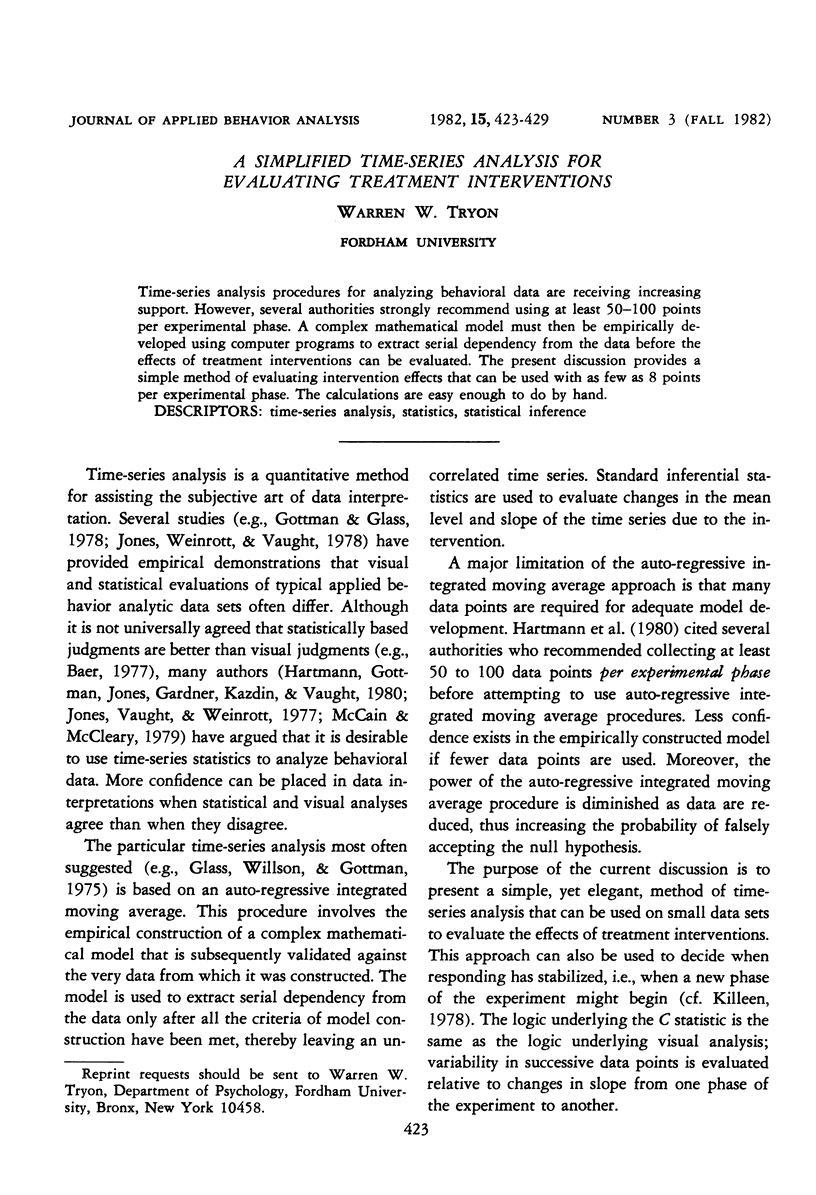
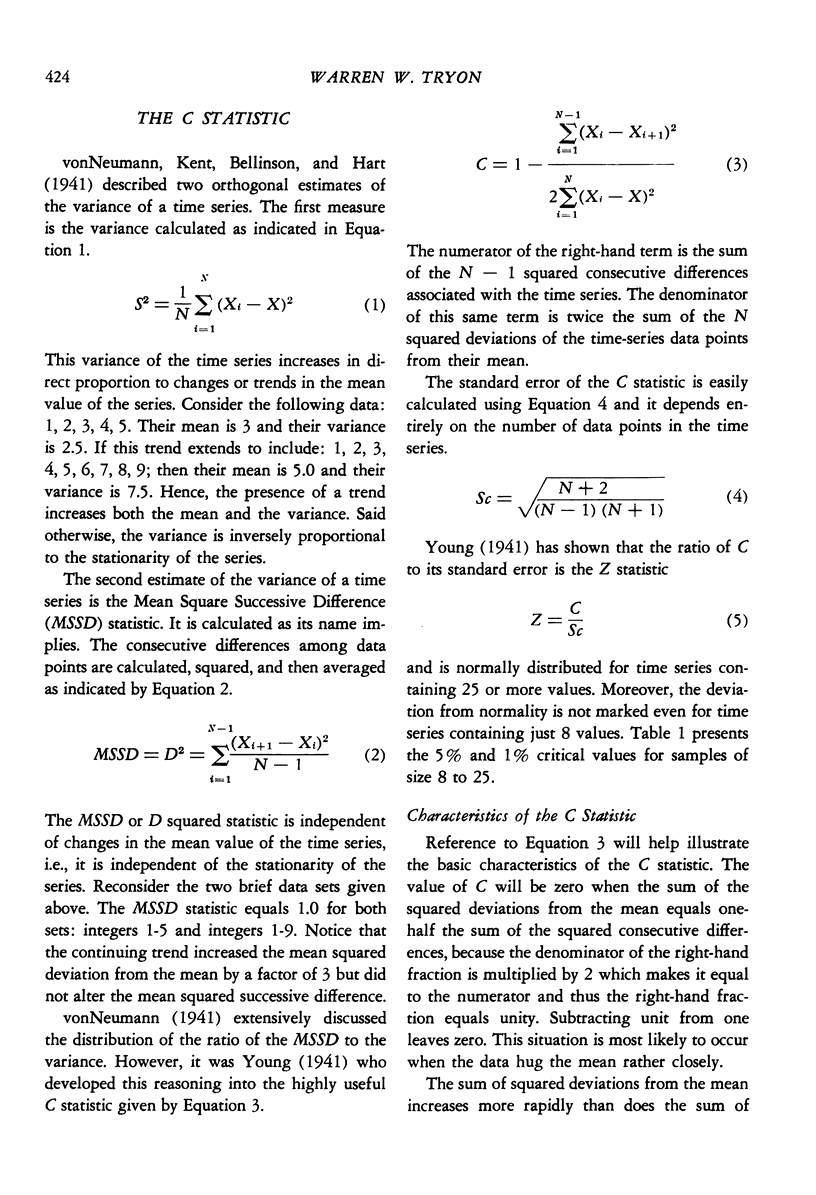
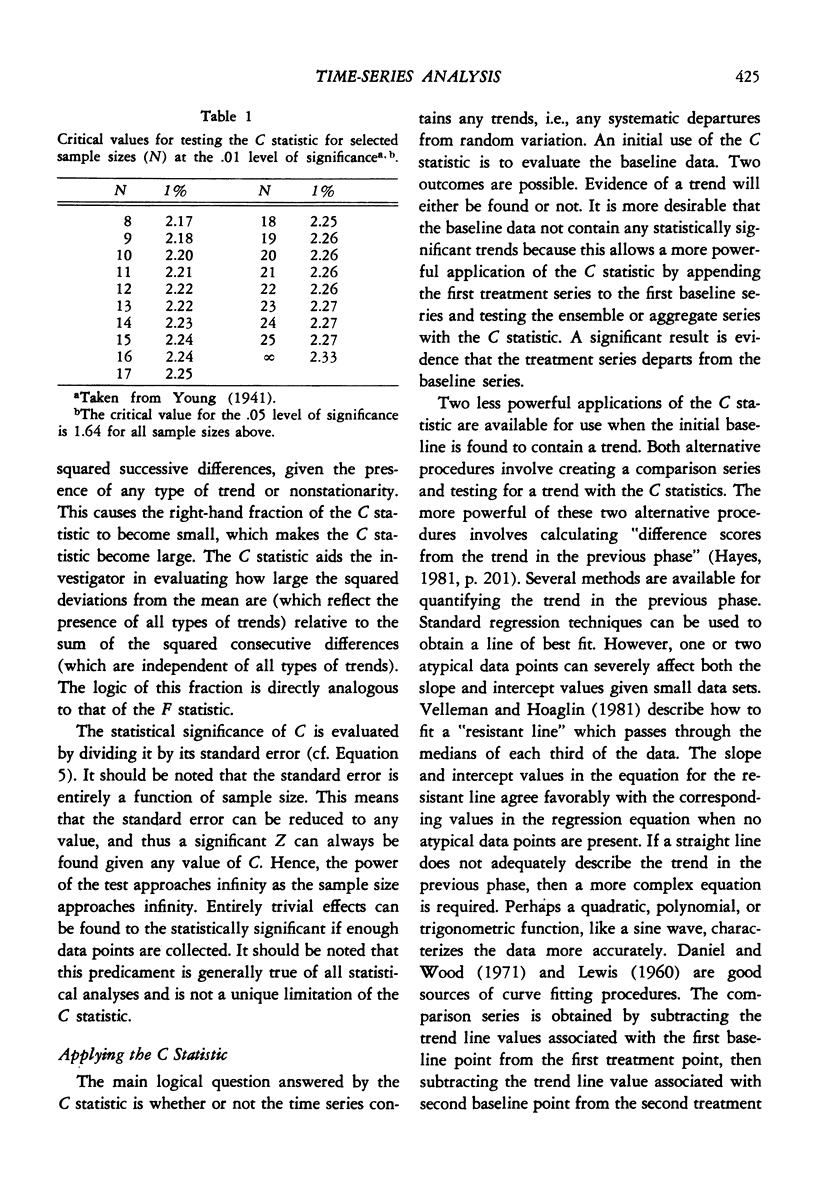
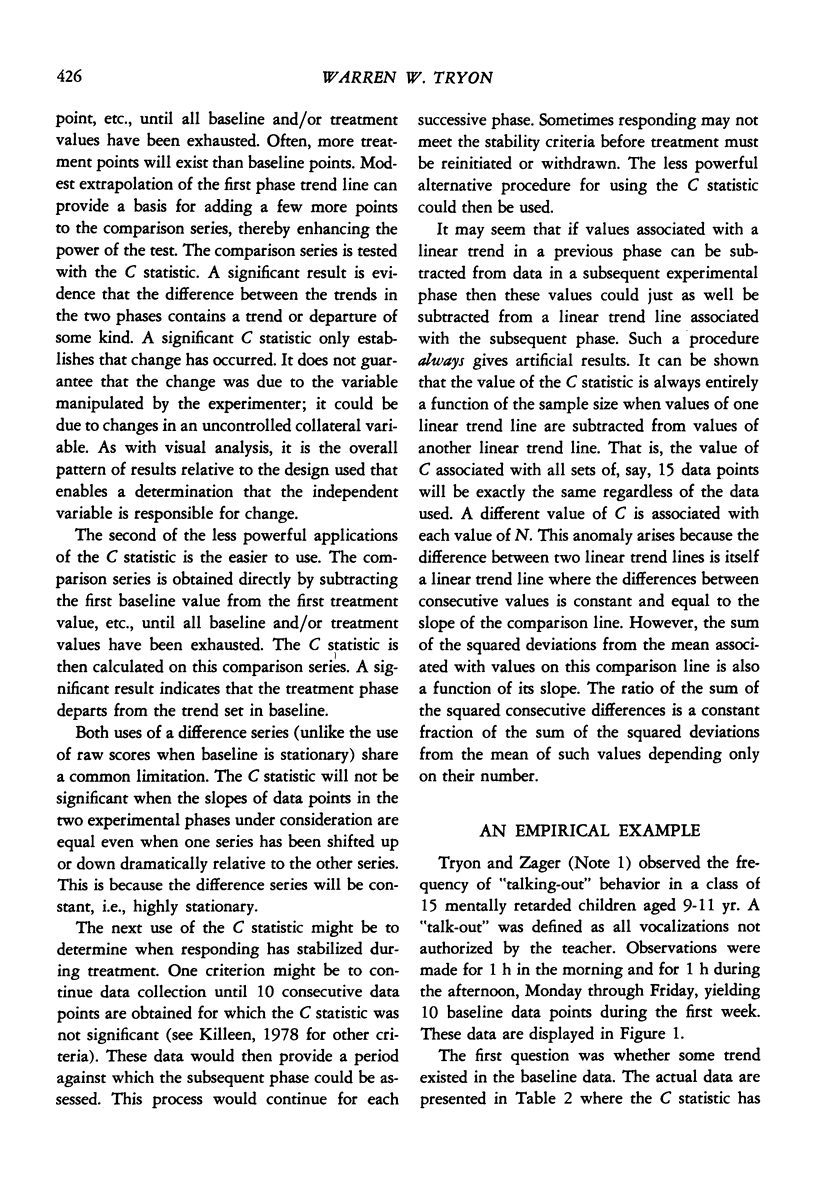
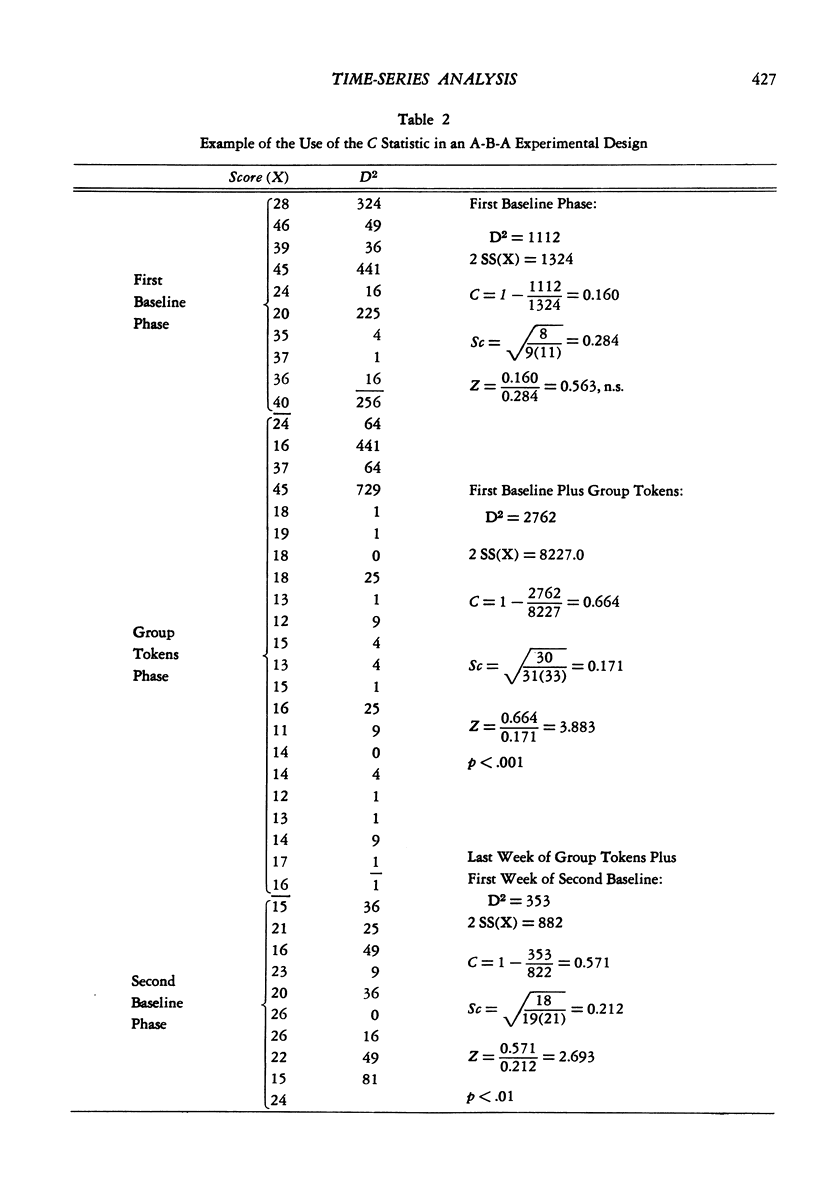
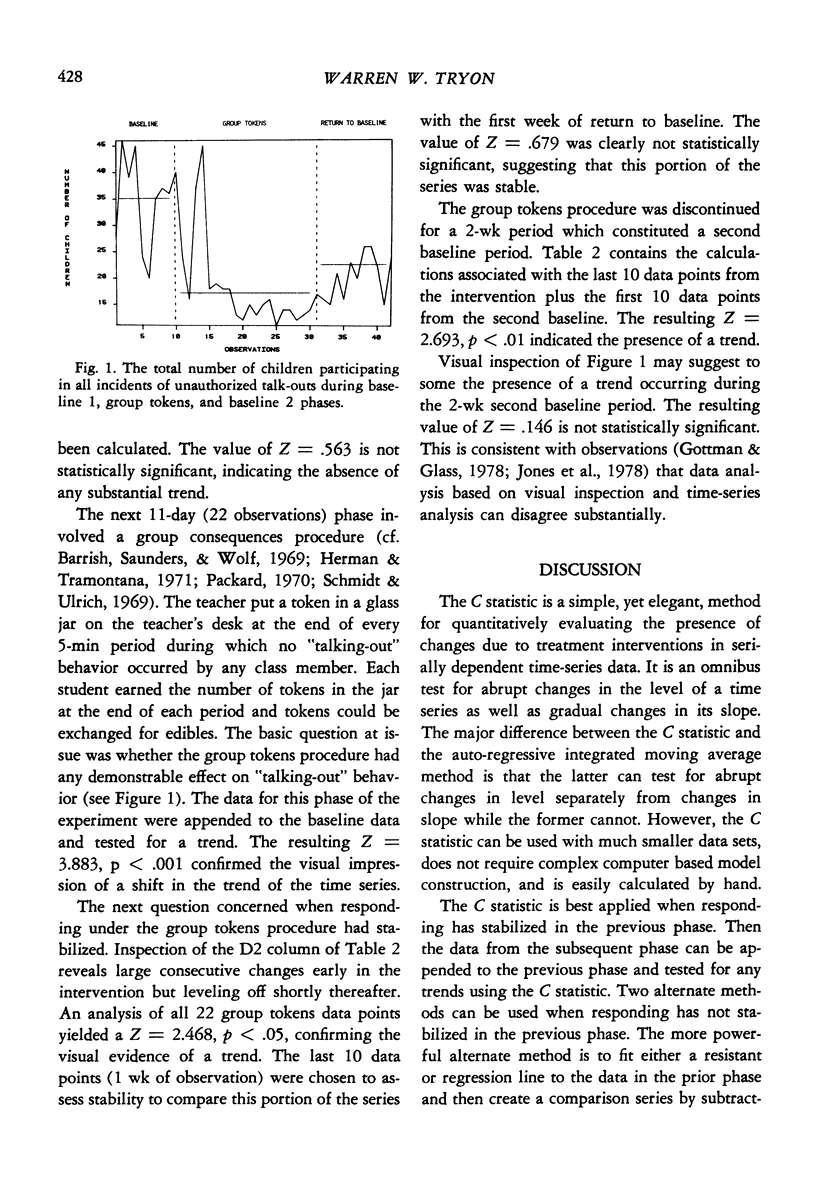
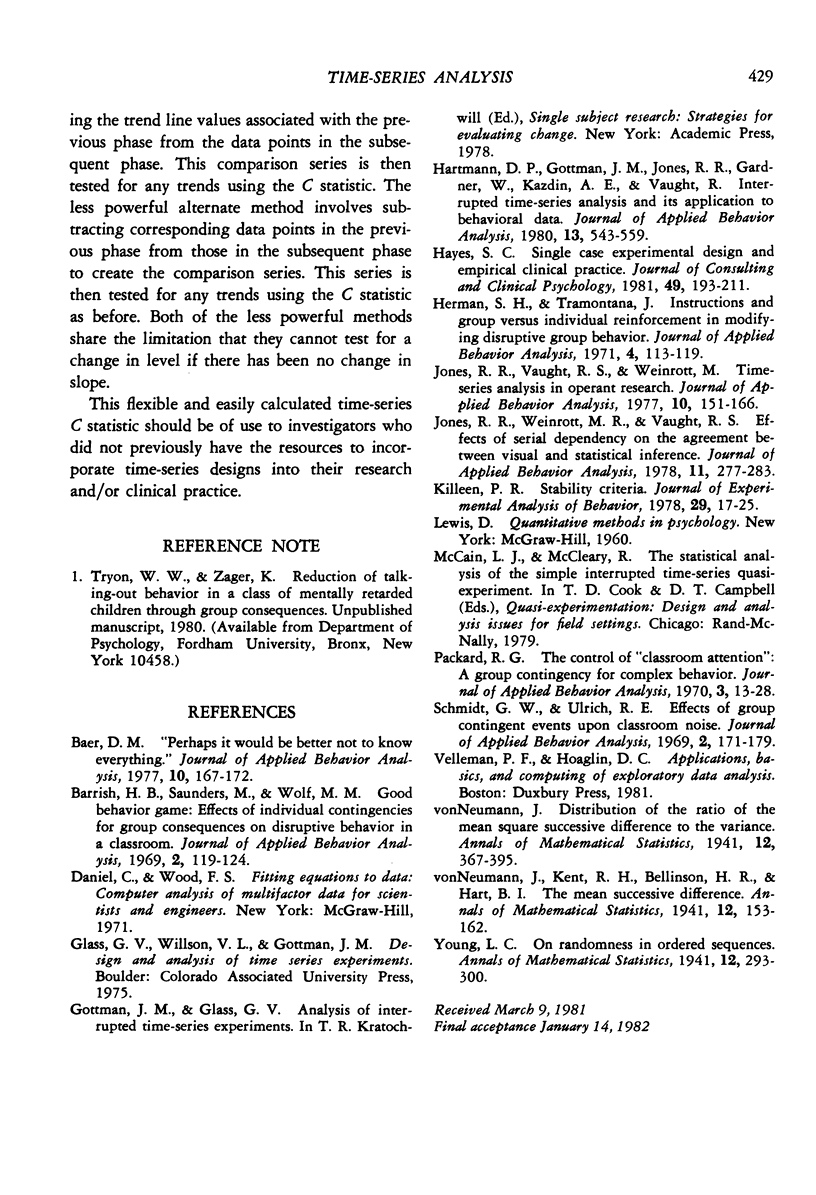
Selected References
These references are in PubMed. This may not be the complete list of references from this article.
- Baer D. M. "Perhaps it would be better not to know everything.". J Appl Behav Anal. 1977 Spring;10(1):167–172. doi: 10.1901/jaba.1977.10-167. [DOI] [PMC free article] [PubMed] [Google Scholar]
- Barrish H. H., Saunders M., Wolf M. M. Good behavior game: effects of individual contingencies for group consequences on disruptive behavior in a classroom. J Appl Behav Anal. 1969 Summer;2(2):119–124. doi: 10.1901/jaba.1969.2-119. [DOI] [PMC free article] [PubMed] [Google Scholar]
- Hartmann D. P., Gottman J. M., Jones R. R., Gardner W., Kazdin A. E., Vaught R. S. Interrupted time-series analysis and its application to behavioral data. J Appl Behav Anal. 1980 Winter;13(4):543–559. doi: 10.1901/jaba.1980.13-543. [DOI] [PMC free article] [PubMed] [Google Scholar]
- Hayes S. C. Single case experimental design and empirical clinical practice. J Consult Clin Psychol. 1981 Apr;49(2):193–211. doi: 10.1037//0022-006x.49.2.193. [DOI] [PubMed] [Google Scholar]
- Herman S. H., Tramontana J. Instructions and group versus individual reinforcement in modifying disruptive group behavior. J Appl Behav Anal. 1971 Summer;4(2):113–119. doi: 10.1901/jaba.1971.4-113. [DOI] [PMC free article] [PubMed] [Google Scholar]
- Jones R. R., Vaught R. S., Weinrott M. Time-series analysis in operant research. J Appl Behav Anal. 1977 Spring;10(1):151–166. doi: 10.1901/jaba.1977.10-151. [DOI] [PMC free article] [PubMed] [Google Scholar]
- Jones R. R., Weinrott M. R., Vaught R. S. Effects of serial dependency on the agreement between visual and statistical inference. J Appl Behav Anal. 1978 Summer;11(2):277–283. doi: 10.1901/jaba.1978.11-277. [DOI] [PMC free article] [PubMed] [Google Scholar]
- Killeen P. R. Stability criteria. J Exp Anal Behav. 1978 Jan;29(1):17–25. doi: 10.1901/jeab.1978.29-17. [DOI] [PMC free article] [PubMed] [Google Scholar]
- Packard R. G. The control of "classroom attention": a group contingency for complex behavior. J Appl Behav Anal. 1970 Spring;3(1):13–28. doi: 10.1901/jaba.1970.3-13. [DOI] [PMC free article] [PubMed] [Google Scholar]
- Schmidt G. W., Ulrich R. E. Effects of group contingent events upon classroom noise. J Appl Behav Anal. 1969 Fall;2(3):171–179. doi: 10.1901/jaba.1969.2-171. [DOI] [PMC free article] [PubMed] [Google Scholar]


